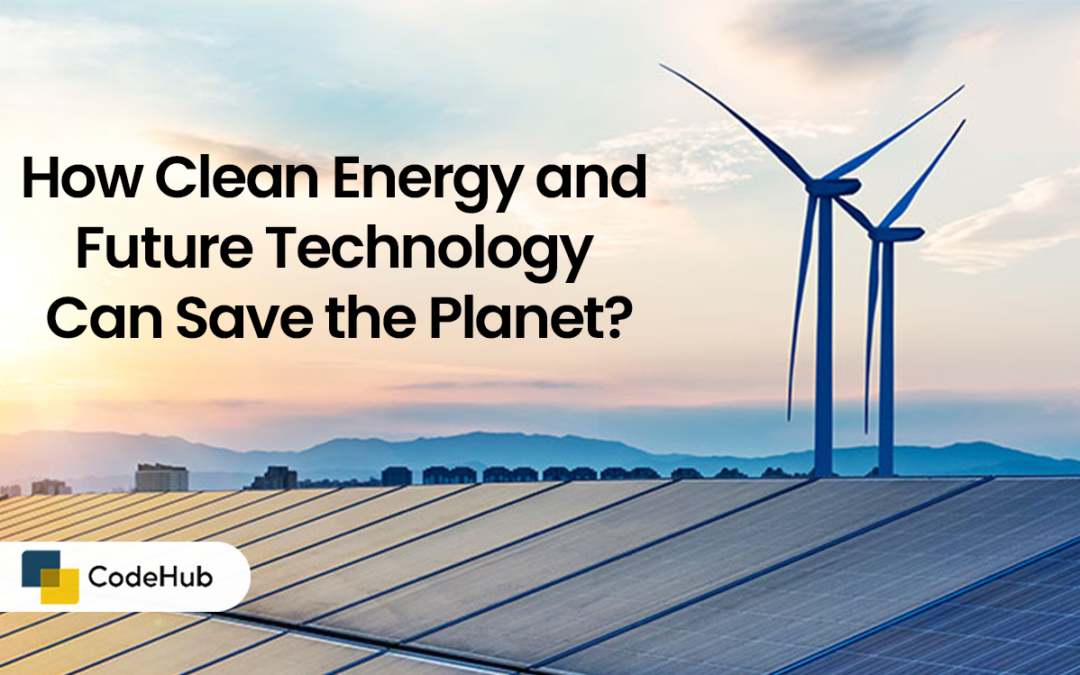Climate change is one of the most urgent and complex challenges of our time. It threatens our environment, health, economy, and security. It requires us to rethink our energy sources, consumption patterns, and lifestyles. It also demands us to innovate and adopt new technologies that can help us reduce our greenhouse gas emissions, adapt to the changing climate, and mitigate its impacts. In this blog post, we will explore how clean energy and future technology can save the planet.
What is clean energy?
Clean energy is energy that comes from renewable, natural, or low-carbon sources, such as solar, wind, hydro, geothermal, biomass, or nuclear. Clean energy does not produce harmful pollutants or greenhouse gases that contribute to climate change. Clean energy can also be more efficient, reliable, and affordable than fossil fuels, such as coal, oil, or gas. Clean energy can power our homes, businesses, industries, and transportation, and can create jobs, growth, and innovation.
What is future technology?
Future technology is technology that is emerging, developing, or transforming, and that has the potential to change the world. Future technology can include artificial intelligence, biotechnology, nanotechnology, robotics, quantum computing, blockchain, and more. Future technology can enable us to solve problems, create opportunities, and improve lives. Future technology can also help us address the challenges and opportunities of climate change, such as monitoring, modeling, forecasting, mitigating, adapting, and communicating.
How can clean energy and future technology save the planet?
Clean energy and future technology can save the planet by working together to achieve the following goals:
- Decarbonize the energy sector: Clean energy and future technology can help us transition from fossil fuels to renewable and low-carbon energy sources, and improve the efficiency and integration of the energy system. For example, solar panels, wind turbines, hydroelectric dams, geothermal plants, and nuclear reactors can generate clean electricity, while smart grids, batteries, hydrogen, and microgrids can store and distribute it. Artificial intelligence, blockchain, and internet of things can optimize the energy management, security, and transparency.
- Reduce the energy demand: Clean energy and future technology can help us reduce the energy demand and consumption, and increase the energy conservation and awareness. For example, energy-efficient appliances, lighting, heating, cooling, and insulation can lower the energy use, while smart meters, sensors, and thermostats can monitor and control it. Biotechnology, nanotechnology, and robotics can create new materials, processes, and products that can save energy and resources.
- Enhance the climate resilience: Clean energy and future technology can help us enhance the climate resilience and adaptation, and reduce the climate vulnerability and risk. For example, satellites, drones, cameras, and sensors can collect and analyze climate data, while machine learning, big data, and cloud computing can process and visualize it. Biotechnology, nanotechnology, and robotics can develop new crops, medicines, and devices that can cope with the climate stress and shocks.
- Support the climate action: Clean energy and future technology can help us support the climate action and cooperation, and increase the climate education and engagement. For example, social media, online platforms, and mobile apps can communicate and share climate information, while virtual reality, augmented reality, and gamification can educate and motivate people. Blockchain, smart contracts, and digital currencies can facilitate and verify the climate transactions and commitments.
Conclusion
Clean energy and future technology are not only compatible, but complementary. They can work together to save the planet from the threat of climate change, and create a better future for ourselves and generations to come. We need to embrace and invest in clean energy and future technology, and use them wisely and responsibly. With clean energy and future technology, we can make a difference and make a change.

